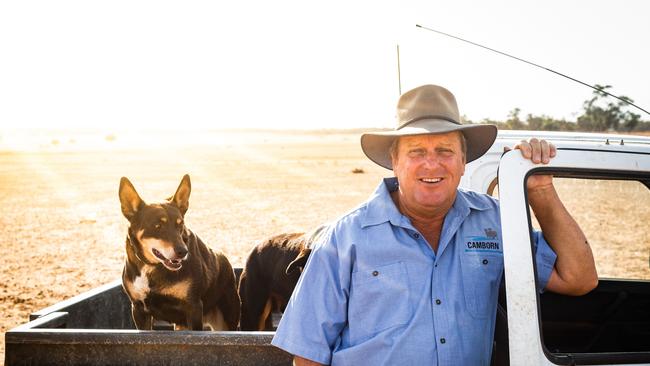Lowest wool clip in close to a hundred years forecast
QUALITY Wool managing director Mark Dyson says the wool sector is heading into unchartered waters, with the national clip forecast to fall to its lowest level in almost a hundred years.

Jobs SA
Don't miss out on the headlines from Jobs SA. Followed categories will be added to My News.
- Drought leads to tight livestock supplies
- Tough times for bush kids
- Rabobank tipping 8 per cent milk drop
QUALITY Wool managing director Mark Dyson says the wool sector is heading into unchartered waters, with the national clip forecast to fall to its lowest level in almost a hundred years.
The Australian Wool Production Forecasting Committee recently forecast production for the 2018-19 season to be 298 million kilograms, a 12.7 per cent decline on the previous year.
Its forecast for the 2019-20 season is even less at 285 million kilograms and this forecast is assuming normal seasonal conditions.
South Australia has suffered the second largest percentage drop in wool production in Australia, down 10.9 per cent, trailing only behind the massively drought-affected New South Wales, which is estimated to be down a whopping 20.4 per cent.
The number of sheep shorn in 2019-20 is estimated to be only 67.9 million, compared to the previous year’s 71.2 million.
Mr Dyson said these figures were no shock to him.
“I said in May last year, when I was on a trip to China with Australian Wool Innovation, I thought the wool production figure should be closer to 300 million kilograms, compared to the 332 million kilograms it was estimated to be back then,” he said.
“Going back to a similar production level as the 1920s in the modern era, it’s really unchartered waters for the industry.
“The longer this dry continues, the more the production figure is going to reduce.”
Mr Dyson said it was hard for the wool sector to compete with the meat industry at the moment, especially with farmers finding it hard to source feed and the prices being paid for both lamb and mutton sky high.
Mutton prices are particularly strong, at virtually double the usual rate.
“With mutton making $5.80 to $6 a kilogram, it’s absolutely ridiculous money,” Mr Dyson said.
“For farmers without much feed, it would be very hard to turn down that sort of money. Even growers that have a bit of feed to get them through, some of them are running out of water in their dams.
“While March and April are traditionally dry, what makes it so bad at the moment is that we’re coming off an extremely dry summer, with no thunderstorms to top up surface water, and that followed on from a tough spring.”
Mr Dyson said producers even in typically reliable areas like the Mid North were saying they would have to sell off some of their young ewes.
“It’s concerning, because that’s our future breeding stock,” he said.
A positive for the industry was the ongoing strong demand, especially from Asia. But wool price indicators have come back this year, due to the large amount of poorer quality, drought-affected wool hitting the market.
Australian Wool Production Forecasting Committee chairman Russell Pattinson said adult sheep numbers were continuing to decline across the nation.
“To the end of January 2019, there has been a 25 per cent increase in the adult sheep slaughter compared with the same period a year earlier,” he said.
“Along with a reduction in greasy wool production there have also been significant changes in key test parameters, a further reflection of ongoing dry conditions.
“Average yield, which currently stands at 63.8 per cent is at its lowest level in eight seasons.”

Wool producer Roger Wilkinson, Camborn Station, Wentworth, NSW, said seasonal conditions were simply terrible.
“Every day I’m carting feed from wherever I can get it,” he said.
Mr Wilkinson is having to go as far afield as Edenhope and Horsham in Victoria trying to source feed for his sheep.
With first-hand knowledge of just how tough wool producers are doing it at the moment, Mr Wilkinson has supplied all of the wool for a new product released by Naracoorte-based business MiniJumbuk, which will raise funds for drought-stricken farmers.
MiniJumbuk is producing 1000 ‘Farmer’s Heart’ wool quilts made solely with Poll Dorset wool from Mr Wilkinson’s 38,000 hectare station.
“It’s hard to comprehend the full affects until you witness the drought’s impact first-hand,” Mr Wilkinson said.
“The drought has had such a significant impact on our livelihoods that we had to do something to help.”
It is hoped sales of the quilt will raise $50,000 for Rural Aid and it is being sold at David Jones nationally, MiniJumbuk retail outlets and through www.minijumbuk.com.au.


